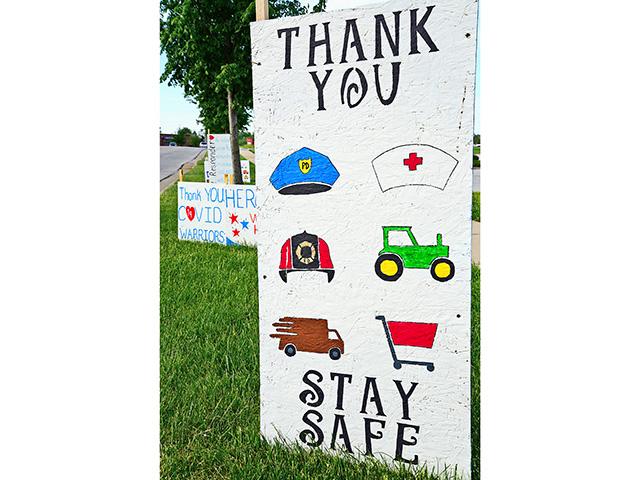We'd Like To Mention
Lessons From a Pandemic
Americans are anxious to return to normalcy after the coronavirus shut down the economy and our way of life. What the new normal looks like is still being determined.
There are no clear answers to our many questions as we weigh our personal health with our fiscal health. For agriculture, the pandemic has exposed several vulnerabilities. Solutions will require thoughtful dialogue not only within the industry but with all levels of government. Putting financial aid packages aside, here is a sample of challenges the coronavirus has brought to the forefront:
1. Fix kinks in the food supply chain. Last month's column praised the resiliency of the ag industry and its partners for keeping food on grocery shelves. Since then, we've seen numerous meat/poultry processing plants idled or operating at reduced capacity as thousands of workers tested positive for COVID-19. The disruption has left producers without anywhere to sell their livestock and likely will lead to temporary meat shortages in grocery stores. Meanwhile, dairy farmers and fruit/vegetable producers have seen demand from institutions plummet with the closing of restaurants, hotels and schools. As a result, some producers have had little choice but to euthanize animals, smash eggs, dump milk or plow crops under, leading to devastating revenue losses.
P[L1] D[0x0] M[300x250] OOP[F] ADUNIT[] T[]
Supply isn't the issue. But, the nation's food chain is built around a highly integrated, sophisticated, synchronized just-in-time system. The pandemic has shown how one weak link can break down the entire chain.
President Donald Trump used the Defense Production Act to deem packing plants as critical infrastructure for the nation to protect the food supply. But, such action brings little confidence to employees who don't want to return to work because of concerns for their safety from COVID-19.
The United Food and Commercial Workers union has called for implementing a uniform set of national standards to safeguard workers with proper protection equipment, coronavirus testing and the slowing of processing lines so proper social-distancing measures can be implemented.
On the retail side, the president and CEO of Albertsons food stores put it best when describing the challenges created by the coronavirus: "When you operate in a just-in-time [environment] and have a tight supply chain, it doesn't allow you to accommodate for situations like this [a pandemic]," Vivek Sankaran stressed in a recent podcast held by Secretary of Agriculture Sonny Perdue. "We should all reflect as an industry and think about how to build redundancy as we go forward."
2. Close the digital divide. The coronavirus has reemphasized how essential reliable broadband is to our everyday lives and well-being. According to a 2019 report from the Federal Communications Commission, 39% of rural areas lack broadband access (25 megabits per second) compared to only 4% of urban areas. The president and Congress have raised the prospect of an infrastructure bill to create thousands of jobs but have so far failed to reach an agreement. Any legislation should include enough funding to connect all of rural America to the rest of the world.
3. Boost medical resources. The struggles of the rural health-care system are well-known: the lack of access to doctors and other medical professionals, longer travel times to receive care, hospital closures. Stress levels are on the rise, yet more than 60% of rural Americans live in areas with a shortage of mental health professionals. The coronavirus has only compounded existing problems.
Certainly, these are daunting challenges with no easy answers. All require big ideas. The ag industry should take the lessons learned from the COVID-19 pandemic to drive strong and innovative action to find plausible solutions.
> Write Gregg Hillyer, 2204 Lakeshore Dr., Suite 415, Birmingham, AL 35209, or email gregg.hillyer@dtn.com.
[PF_0620]
(c) Copyright 2020 DTN, LLC. All rights reserved.




